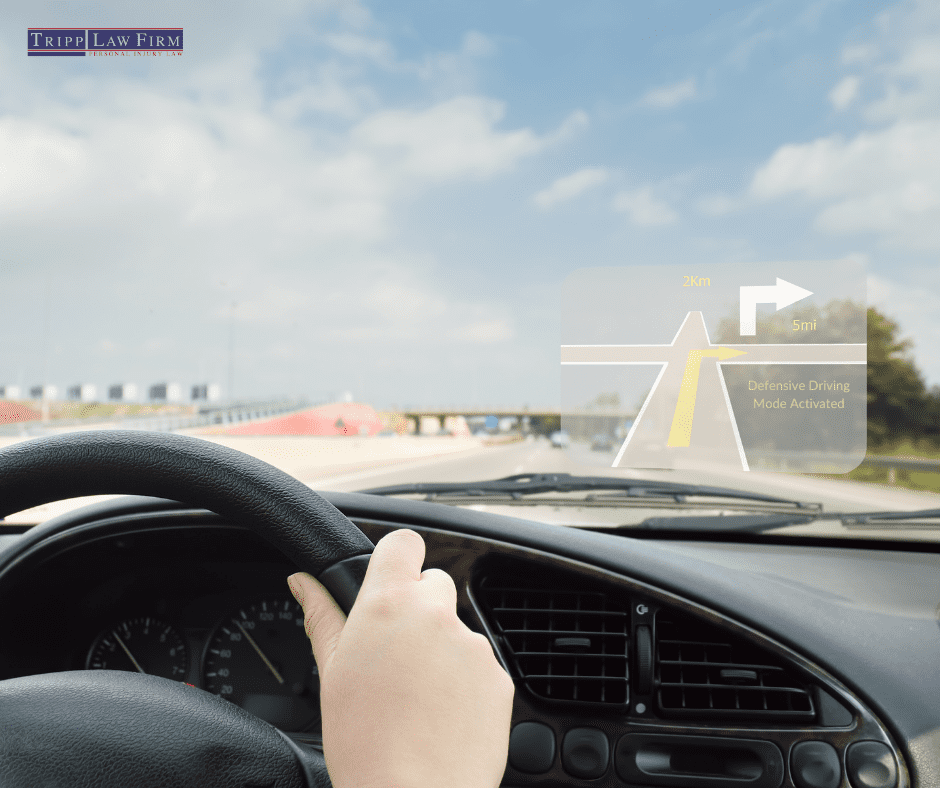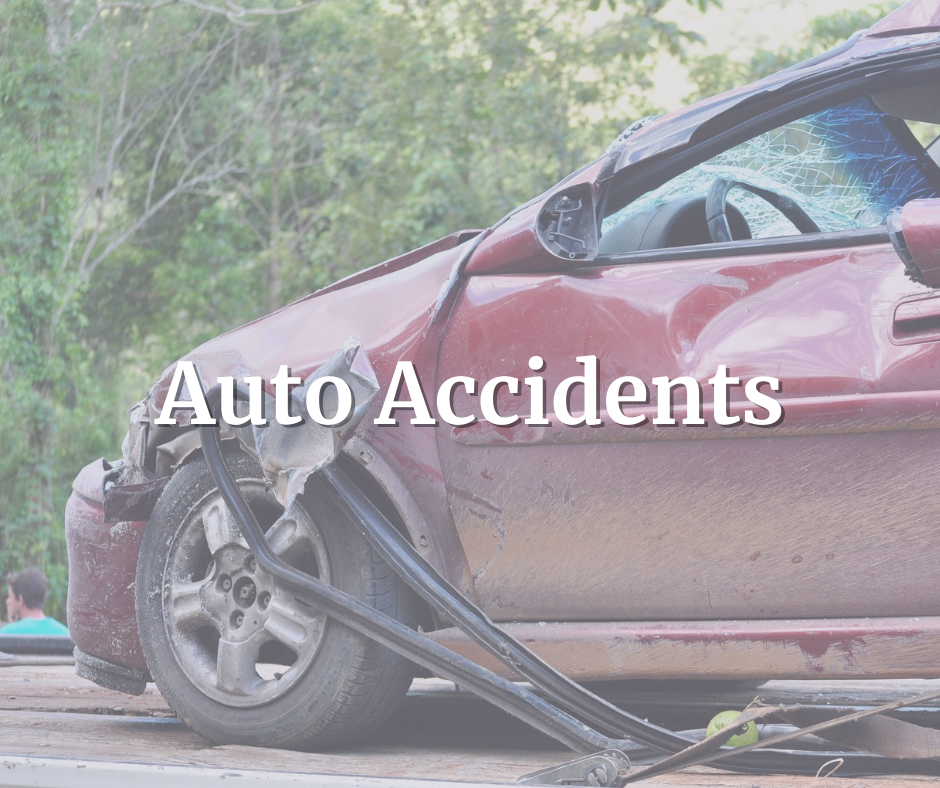What is Defensive Driving?
trippfirm / Posted on /

At least 115 million vehicles are on the road every day for work, shopping, and schooling. Not many days go by where drivers don’t see an accident on the road. The process of receiving a license is as lengthy as it is because those in charge know how deadly vehicles can be.
The 3 greatest causes of accidents are distracted driving, speeding, and drunk driving. Despite the traffic and weather, people tend to drive with the same reckless habits without recognizing hazards. Many times with accidents created by these sources, they seem unpreventable. However, defensive driving seems to show otherwise. How does defensive driving work? Well, defensive driving teaches a way of thinking that could help drivers see potential issues before they arise.
Overall, defensive driving is a way of taking one’s self outside of the situation and understanding that there are more drivers on the road that may not have the same training and wisdom as themselves. Here are the steps to become a Defensive and Safer Driver:
Be Aware of Surroundings
Safe driving is not the ability to be focused on the vehicle or road in front. Instead, the driver should be aware of ALL surroundings. Paying attention to several cars ahead and over can help prevent problems with immediate stoppage and unexpected movements. Also, looking for side roads, driveways, and blind corners increases prevention as turning points are where many accidents occur.
When the vehicle is stopped at traffic lights or other points at which the driver is able to see other drivers, one should look to see how focused others are. Drivers are increasingly on their phones whether they are texting or calling which affects their judgment and timing. Knowing someone is on their phones or is impaired, allows a driver to give space and avoid dangerous drivers.
With Florida as a Top 3 state in total fatalities involving a drunk driver, it is important to know the signs of a drunk driver. According to CCIQ, signs to look for include swerving, extremely wide turns, too many near-misses with objects and cars, and more. Recognizing the signs could save you and your family’s lives.
Always Check Blind Spots
Surroundings also involves viewing the side of vehicles too. Looking out the mirror is helpful, but side mirrors do not see everything. For many, the blind spot is the bane of driver’s existence. However, other drivers seem to be obsessed with sitting in the blind spot of others, making it difficult to see them.
This step requires taking an extra second before every change of lanes and turns to make sure no one is in the way. Because this takes an extra second, it also is beneficial to give space between cars. That way if the car in front slows down, an accident will be avoided when turning to look at blind spots.
Slow Down at Intersections
Speeding is the second biggest cause of accidents. Those who speed tend to slow down in a short amount of time. This leaves room for error if the breaks have issues or if the driver sees the light or object too late. Intersections are one of the greatest centers of accidents as people come from different angles with different motives.
Slowing down also includes starting slow when the light turns green. The occasional driver likes to go through red lights to get to their destination faster, especially if there is no camera on the light. So by starting slow, a driver can see potential red light runners before it happens.
Additionally, slowing down is essential in poor weather. Drivers cannot control the weather nor can they control other driver’s response to weather. Weather is known to slow brake’s effectiveness and tire grip. Driver’s should seek to slow down 2-3 times faster than normal when in poor weather.
Make Your Intentions Clear
If drivers follow every other step on this list, it will be ineffective if the drivers do not prioritize this one. Other drivers should be aware of your intentions when you drive. This is not merely a suggestion, but a legal obligation. If a driver is looking to turn or change lanes, a signal should be turned on at least 5 seconds prior to movement. This allows other drivers to prepare and create space if necessary. This also tells people on side roads one’s intentions so that they avoid turning into that vehicle.
In terms of breaking, the sooner a driver breaks, the more time the vehicles behind them have to break. If breaking in heavy traffic, breaking late could cause massive damage to multiple vehicles and those inside.
Maximize Exit Strategies
Also, believe it or not, drivers cannot control traffic. The one aspect that drivers can control is what lane to be in and how much space they give to the vehicle in front of them. If reckless behavior is seen or an accident is happening nearby, it is important to have an emergency exit available to avoid conflict. Having an exit strategy is not as much an action, as it is an idea to have in preparation. So if anything were to arise that would threaten the vehicle or lives of those in the vehicle, the primary driver would have a safety action in mind and on-hand.
Minimize Distractions
Texting, calling, grabbing items, or talking with others in the car is highly distracting for drivers. The less distractions that a driver has, the more they can concentrate on what others are doing outside the vehicle. Placing a phone on silent is a great way to minimize usage. But even better, there are great apps to eliminate a phones capabilities when someone is driving.
There is nothing wrong with letting passengers know to be cautious of distracting the driver. It is better to be more cautious for a drive than to deal with the consequences of not making proper arrangements.
The pillars of defensive driving are simple, but easily ignored. Defensive driving itself is not full-proof, however, the greater the awareness of the driver, the smaller the chance of human error. After all, human error causes 94% of accidents.
So do you think you have what it takes to be a defensive driver? What is the hardest step to follow?
In an auto accident? Call TRIPP LAW FIRM – Personal Injury Law at (727) 398-2900 in Pinellas/Pasco/Polk/Orange/Osceola/Seminole County, for an immediate, confidential case evaluation. There is NO Fee and NO Costs if we do not obtain a Recover for YOU!
At the TRIPP LAW FIRM, we have the necessary experience to protect you and your family’s legal rights and pursue the appropriate damages. Thus, don’t hesitate to call us. We answer our phones 24/7/365. The injury law team and staff private investigators at the TRIPP LAW FIRM are ready on a moment’s notice.
TRIPP LAW FIRM – Personal Injury Law – Available 24/7
TOLL FREE: (888) 392-LAWS (5297)
www.TrippFirm.com
References:
How to use turn signals correctly: A complete driver’s guide. Zutobi Drivers Ed. (2021, June 16). Retrieved January 27, 2022, from https://zutobi.com/us/driver-guides/turn-signals
Myers, B. (2021, September 9). Defensive driving facts. DefensiveDriving.org. Retrieved January 27, 2022, from https://www.defensivedriving.org/dmv-handbook/defensive-driving-facts/
Pines, M. (2021, July 27). Top causes of car accidents: The 25 leading causes of road accidents. Pines Salomon Injury Lawyers, APC. Retrieved January 27, 2022, from https://seriousaccidents.com/legal-advice/top-causes-of-car-accidents/
Top 5 rules of defensive driving. Selective Insurance Social. (2016, June 22). Retrieved January 27, 2022, from http://social.selective.com/articles/top-5-rules-of-defensive-driving




Leave a Reply